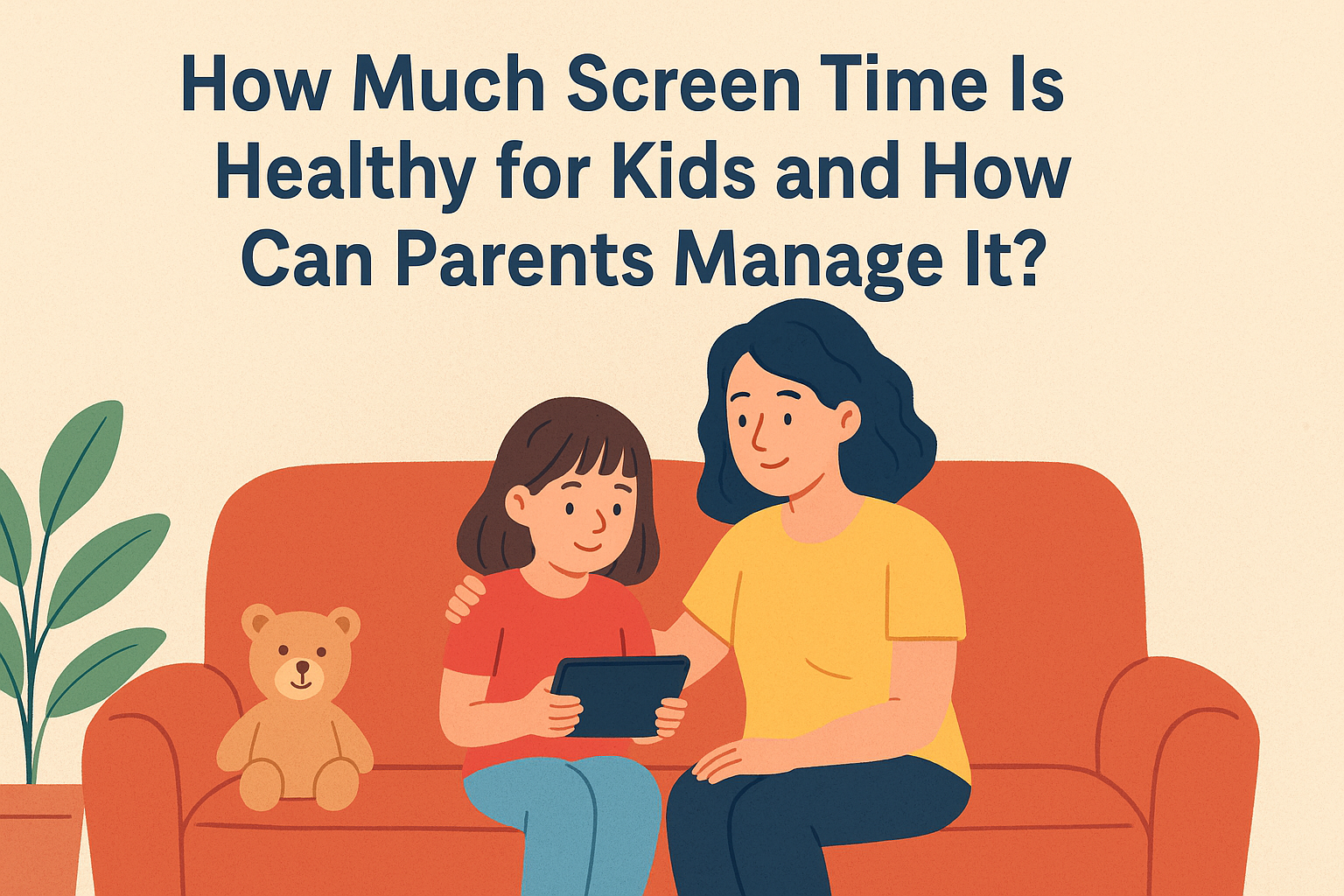As parents, we’ve all been there — trying to feed our child while YouTube plays in the background, or handing over the phone “just for five minutes” that somehow turns into an hour.
Screens are everywhere — from classrooms to living rooms — and while technology has made life easier, it’s also created a big question for modern parents:
How much screen time is too much for kids?
Let’s understand how to strike a healthy balance between screens and real-life play.
Why Managing Screen Time Matters
Screens aren’t the villain. In fact, educational videos, story apps, and interactive games can help kids learn faster.
But when screen time isn’t managed well, it can lead to:
- Poor sleep quality
- Eye strain
- Short attention span
- Less outdoor play
- Emotional meltdowns when devices are taken away
The key is not to ban screens — it’s to balance them.
What Experts Recommend
Here’s what most child development experts suggest:
- Under 2 years: Avoid screens except for video calls.
- 2–5 years: Limit to 1 hour of high-quality content per day, with parental supervision.
- 6–12 years: Create clear boundaries — for example, no screens during meals or 1 hour before bed.
- Teens: Encourage self-regulation — let them set their own limits with guidance.
Remember, consistency matters more than perfection.
How Screen Time Affects Kids
Excessive screen exposure can affect a child’s:
- Brain development: Too much fast-paced content may affect focus and creativity.
- Emotional regulation: Kids become dependent on screens for comfort.
- Social skills: They may find real conversations less engaging than digital ones.
But here’s the good news — children can easily adapt when we model the right habits.
How Parents Can Manage Screen Time Naturally
1. Create Screen-Free Zones
Keep mealtimes, bedrooms, and family hours screen-free. It’s easier to enforce when everyone follows it — yes, even us parents!
2. Use Technology Together
Watch shows together and discuss what’s happening. Ask questions like, “Why do you think that character was sad?” — this makes screen time interactive and meaningful.
3. Offer Fun Alternatives
When kids have interesting offline options — art, outdoor play, or storytelling — they naturally spend less time on screens.
4. Set Time Limits, Not Just Rules
Use visual timers or apps that notify when screen time is up. This helps kids understand limits without constant nagging.
5. Model the Behaviour
Children copy what they see. If we’re scrolling all the time, they’ll do the same. Keep your phone aside during family time — it sends a powerful message.
6. Turn Screen Time Into Learning Time
Educational apps, drawing games, or kids’ yoga videos — all count as positive screen use when balanced with offline play.
Riya, a mother of a 5-year-old from Pune, struggled to reduce her son’s TV time. Instead of banning cartoons, she introduced “TV tokens” — he could earn 10-minute tokens for completing tasks like cleaning toys or reading books.
Within a month, his TV time dropped naturally, and he felt proud to “earn” his screen time.
Small changes, big difference.
Tips for Age-Wise Balance
| Age | Recommended Daily Screen Time | Best Activities to Replace It |
|---|
| 0–2 yrs | None (except video calls) | Tummy time, music, picture books |
| 2–5 yrs | 1 hour | Art, puzzles, outdoor play |
| 6–9 yrs | 1–1.5 hours | Reading, games, chores |
| 10–13 yrs | 1.5–2 hours | Sports, hobbies, family talks |
| 14+ yrs | Self-regulated | Volunteering, journaling, exercise |
Remember: It’s About Connection, Not Control
Your goal isn’t to be a strict “screen police.”
It’s to help your child enjoy the real world more than the virtual one.
Screens will always be part of life — but childhood doesn’t last forever. Let’s make sure our children remember laughter, stories, and outdoor fun more than reels and cartoons.
Experts recommend no more than 1 hour of quality content with adult supervision.
Not necessary. Occasional video calls or nursery rhymes are fine, as long as it’s limited and interactive.
Replace, don’t restrict — offer fun alternatives like crafts, stories, or outdoor play.
Not at all! The key is co-viewing — watch together and discuss what your child learns.
Stay calm and consistent. Over time, they’ll adjust to structured screen routines.
Yes. The blue light from screens can delay sleep, so avoid screens at least an hour before bedtime.
Set specific “watch times” and involve caregivers. Quality matters more than quantity.
Irritability, lack of interest in outdoor play, or poor focus are key indicators.
Yes. Interactive activities (like puzzles or music apps) encourage thinking and creativity.
Let them help decide daily limits — this makes them more responsible and cooperative.
